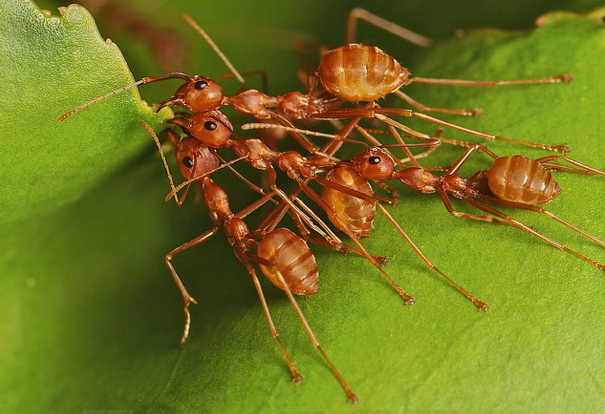Researchers at the University of Wisconsin School of Medicine and Public Health have discovered a link between insects and antibiotics that has lead to the development of new medicine.
The project, which is a collaborative effort between SMPH and the College of Agriculture and Life Sciences, involved observations of ants and other insects done by co-principal investigator Cameron Currie.
Co-principal investigator David Andes, a professor in the Department of Medicine, said Currie’s “breakthrough” research has allowed for the creation of new antibiotics.
“We’re excited because we’ve identified a new source of antibiotics that hasn’t been tapped into, and it appears to be a very rich source,” Andes said.
While a Ph.D. student at the University of Toronto, Currie studied the interconnections between microbes and hosts. His research led him to study ant colonies that grow fungus for food and the parasites that attack the ants. While he was doing this work, he said he observed a white coating on the bodies of the ants and he discovered that it was bacteria.
The bacteria Currie found was known to produce antibiotics, which prompted him to investigate whether the ants were using it to develop a resistance to the parasites. He discovered they, and other insects, including beetles and honeybees, were doing the same thing.
And for Currie, investing in basic scientific research is just as important, if not more so, than investing in applied science, which produces a specific result based on a specific question.
“Scientific advancement has been driven by basic science research, of trying to understand our world around us,” he said.
Though the new source of antibiotics discovered appears to be rich, Andes said these antibiotics will lose effectiveness over time. He said bacteria can develop a resistance as quickly as three years after an antibiotic’s development.
But, Andes said the success rate in creating antibiotics with the new source is greater than with past sources.
“The thing that’s unique about antibiotics is resistance comes naturally,” he said.
Nationwide, more than 2 million people annually become infected by bacteria that are resistant to antibiotics, according to the Centers for Disease Control and Prevention.
The new antibiotics will be used to treat those for whom current antibiotics are ineffective, Andes said, adding that UW Hospital on average sees one patient daily who cannot be treated with current antibiotics.


